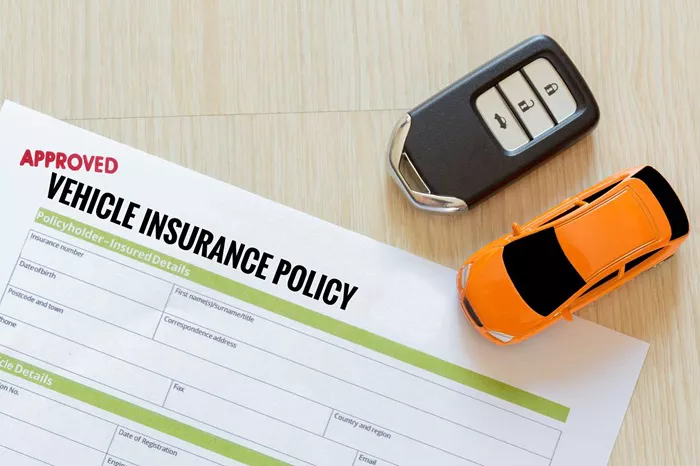As an RV owner, you know that your vehicle is not just a means of transportation—it’s a home on wheels. From weekend getaways to long road trips, your RV offers comfort and adventure. However, it also faces a range of risks, including weather-related damage. One of the most common weather-related issues that RV owners encounter is hail.
Hail can cause significant damage to your RV, ranging from small dents to broken windows, damaged roofs, and even structural issues. This leads to a common question: Does RV insurance cover hail damage? In this article, we will explore how RV insurance works when it comes to hail damage, what types of coverage are necessary, and how you can ensure you’re fully protected.
What Is Hail Damage?
Before diving into insurance coverage, it’s important to understand what hail damage is and how it affects your RV. Hail is a type of precipitation consisting of solid ice balls that can range in size from small pellets to large chunks. These ice balls fall from the sky during thunderstorms and can cause severe damage to vehicles, homes, and other property.
Hail damage to your RV can occur in several ways:
Dents and Dings: Hailstones, particularly larger ones, can create visible dents in the body of your RV. These dents may not affect the functionality of the vehicle, but they can significantly impact the appearance.
Broken Windows: If the hailstones are large enough, they can shatter windows on your RV, including side windows, windshields, or skylights.
Roof Damage: The roof of your RV is highly susceptible to hail damage. Hailstones can crack or puncture the roof, leading to leaks and structural damage.
Damage to Exterior Features: Hail can also cause damage to exterior components like awnings, satellite dishes, or air conditioning units.
Depending on the severity of the hailstorm and the size of the hailstones, the damage to your RV could range from minor cosmetic issues to major structural damage. This is why it’s crucial to understand whether your RV insurance can help you cover these costs.
Does RV Insurance Cover Hail Damage?
The answer to the question, “Does RV insurance cover hail damage?” largely depends on the type of coverage you have. RV insurance is similar to auto insurance in many ways, but it also has some unique provisions due to the nature of the vehicle. Here’s a breakdown of how different types of RV insurance coverage apply to hail damage.
1. Comprehensive Coverage
Comprehensive coverage is the primary type of insurance that covers damage to your RV from non-collision events. This includes hail damage, as well as damage from things like theft, vandalism, and falling objects.
If you have comprehensive coverage as part of your RV insurance policy, your insurance will likely cover hail damage. This means that if your RV is caught in a hailstorm and suffers damage, the repair costs may be covered under your comprehensive coverage, less any deductible.
For example, if hail dents the side of your RV or cracks a window, your comprehensive coverage would typically cover the cost of repairs or replacements. However, it’s important to check the terms of your specific policy to confirm that hail damage is included.
2. Collision Coverage
Collision coverage is designed to cover damage to your RV resulting from a collision with another vehicle or object. However, this type of coverage does not typically apply to hail damage. Hail is considered a non-collision event, so it would not be covered under a collision policy.
In most cases, if your RV is involved in an accident during a hailstorm, collision coverage would cover the damage from the accident itself. However, the hail damage to the body of the RV or any broken windows would fall under comprehensive coverage, not collision coverage.
3. Personal Property Coverage
While personal property coverage doesn’t directly apply to the RV itself, it can help if you have belongings inside your RV that are damaged by the hailstorm. For example, if hail breaks windows and causes rain to damage your furniture, electronics, or clothing, personal property coverage may cover the cost of replacing or repairing those items. However, this would be subject to the limits of the policy and the specific terms regarding coverage for personal property.
4. Exclusions in Your Policy
Like any other insurance policy, RV insurance comes with exclusions. Some policies may exclude certain types of damage, such as hail, if the damage occurs under specific conditions. For example, if your RV is left outside during an extreme hailstorm and is not properly sheltered, your insurer may argue that the damage is due to neglect, and they could deny the claim.
It’s essential to thoroughly read your RV insurance policy to identify any exclusions related to weather damage or hail specifically. For example, some policies may only cover hail damage if the storm meets certain criteria, such as a specific severity or size of the hailstones. Others may only provide coverage if the RV was stored in a certain location or under certain conditions.
5. Deductibles and Coverage Limits
Even if you have comprehensive coverage, there are still factors that could affect how much hail damage your insurance will cover. The two main factors to keep in mind are your deductible and the coverage limits of your policy.
Deductible: This is the amount you must pay out of pocket before your insurance kicks in. For example, if your RV sustains $5,000 in hail damage, and you have a $1,000 deductible, you would pay the first $1,000, and your insurance would cover the remaining $4,000 (if it meets all other terms of your policy).
Coverage Limits: Every insurance policy has a maximum limit of coverage. If the cost of repairing your RV’s hail damage exceeds your policy’s coverage limit, you would be responsible for paying the difference. It’s important to ensure that your policy limits are adequate to cover the full cost of repairs or replacements in the event of significant damage.
How to Prevent Hail Damage to Your RV
While you can’t control the weather, there are steps you can take to minimize the risk of hail damage to your RV:
Park in a Shelter: Whenever possible, park your RV in a covered area, such as a garage, carport, or RV shelter, to protect it from hailstorms.
Use a Protective Cover: If you don’t have access to a covered parking space, consider using a protective cover for your RV. These covers can provide an extra layer of protection against hail and other weather-related damage.
Avoid Areas with Severe Weather: If you’re planning a road trip, check the weather forecasts for areas you will be traveling through. Try to avoid regions prone to hailstorms, especially during certain seasons.
Seek Immediate Shelter During a Storm: If you’re on the road and encounter a hailstorm, try to find immediate shelter. Park your RV under a bridge, in a parking garage, or any structure that can offer protection from the hail.
How to File a Claim for Hail Damage
If your RV is damaged by hail and you need to file a claim, follow these steps:
Assess the Damage: Take detailed photos of the damage to your RV, including dents, broken windows, and any other affected areas.
Contact Your Insurance Provider: Notify your insurer about the hail damage as soon as possible. Provide them with all necessary information and documentation to support your claim.
Get an Estimate: Your insurer may require an estimate of the repair costs before approving the claim. You may need to visit an authorized repair shop to get a quote.
Submit the Claim: Complete all required forms and submit your claim to your insurer. Be sure to follow up regularly to check on the status of your claim.
Get the Repairs Done: Once your claim is approved, the insurance company will either pay for the repairs directly or reimburse you for the costs, minus the deductible.
Conclusion
In summary, RV insurance can cover hail damage, but only under specific conditions. Comprehensive coverage is the key type of insurance that protects your RV against non-collision events like hailstorms. However, your policy may have exclusions, limits, or deductibles that impact how much coverage you receive.
To ensure you’re fully protected, review your RV insurance policy carefully and consider adding extra coverage if needed. By taking steps to prevent hail damage and understanding your coverage, you can enjoy peace of mind knowing that your RV is well-protected during your travels.
Related Topics:
How Do I Pay My Excess on Car Insurance?



















